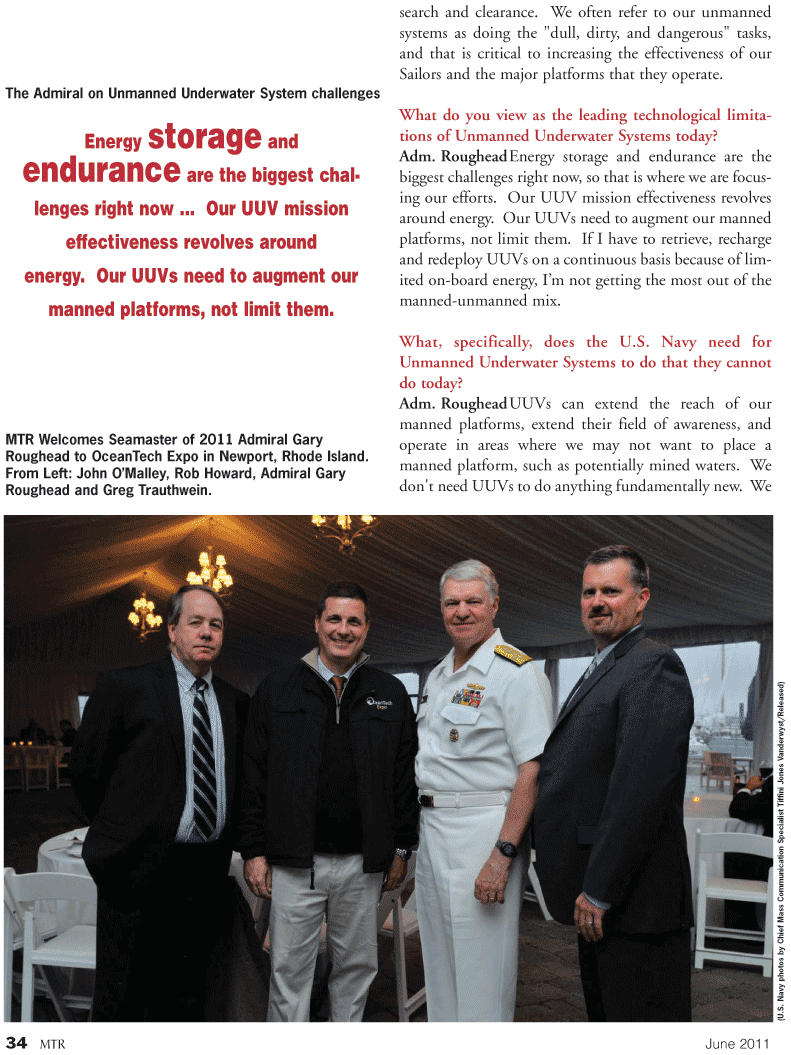
Page 34: of Marine Technology Magazine (June 2011)
Hydrographic Survey
Read this page in Pdf, Flash or Html5 edition of June 2011 Marine Technology Magazine
34 MTR June 2011 search and clearance. We often refer to our unmanned systems as doing the "dull, dirty, and dangerous" tasks, and that is critical to increasing the effectiveness of our
Sailors and the major platforms that they operate.
What do you view as the leading technological limita- tions of Unmanned Underwater Systems today?
Adm. RougheadEnergy storage and endurance are the biggest challenges right now, so that is where we are focus- ing our efforts. Our UUV mission effectiveness revolves around energy. Our UUVs need to augment our manned platforms, not limit them. If I have to retrieve, recharge and redeploy UUVs on a continuous basis because of lim- ited on-board energy, I’m not getting the most out of the manned-unmanned mix.
What, specifically, does the U.S. Navy need for
Unmanned Underwater Systems to do that they cannot do today?
Adm. RougheadUUVs can extend the reach of our manned platforms, extend their field of awareness, and operate in areas where we may not want to place a manned platform, such as potentially mined waters. We don't need UUVs to do anything fundamentally new. We
MTR Welcomes Seamaster of 2011 Admiral Gary
Roughead to OceanTech Expo in Newport, Rhode Island.
From Left: John O’Malley, Rob Howard, Admiral Gary
Roughead and Greg Trauthwein.
Energy storage and endurance are the biggest chal- lenges right now ... Our UUV mission effectiveness revolves around energy. Our UUVs need to augment our manned platforms, not limit them.
The Admiral on Unmanned Underwater System challenges (U.S. Navy photos by Chief Mass Communication Specialist Tif fini Jones V a nder wyst/Released)

 33
33

 35
35
